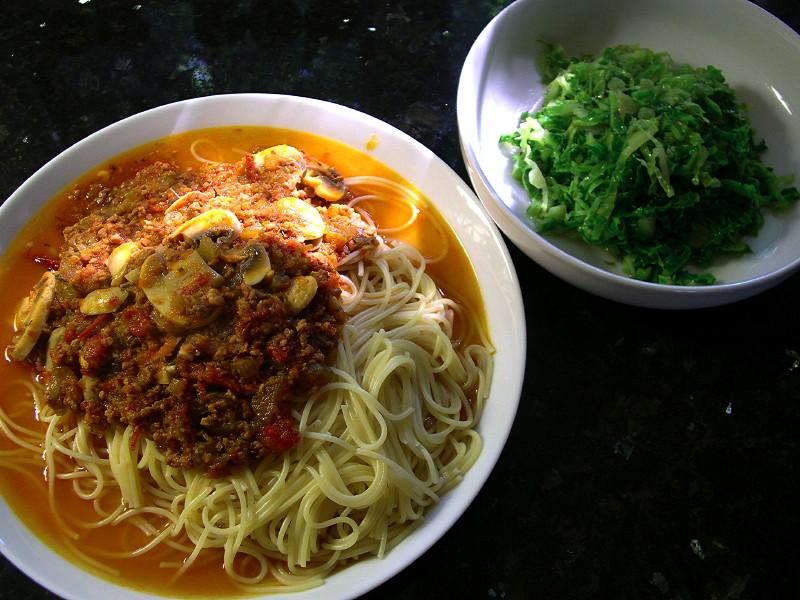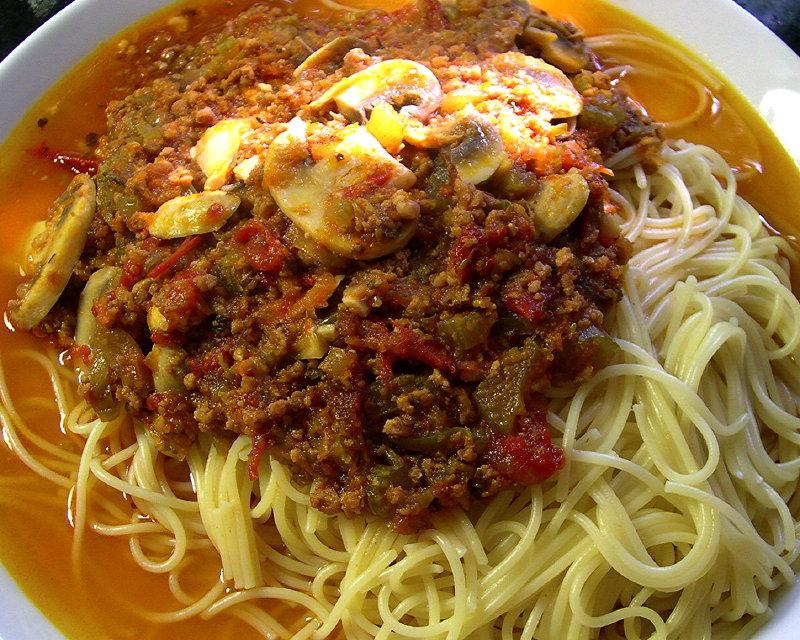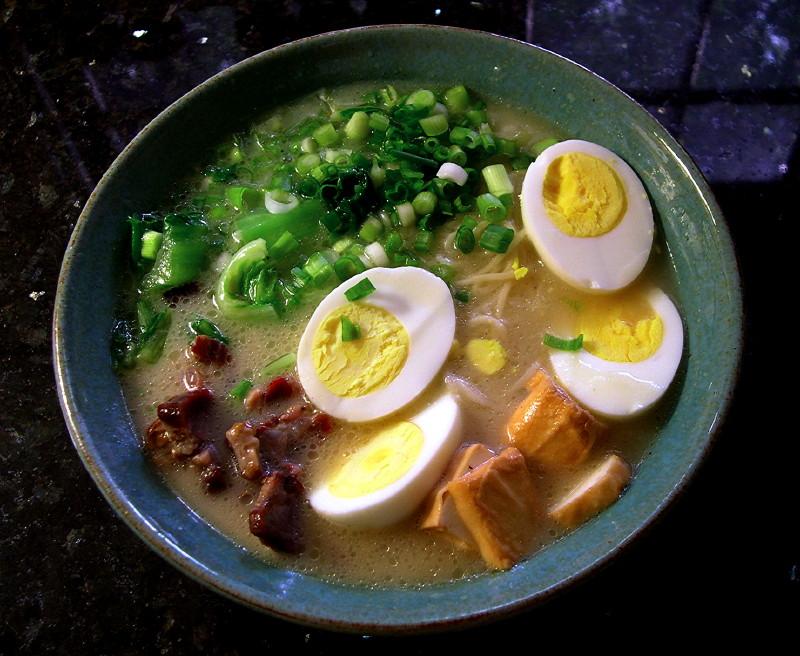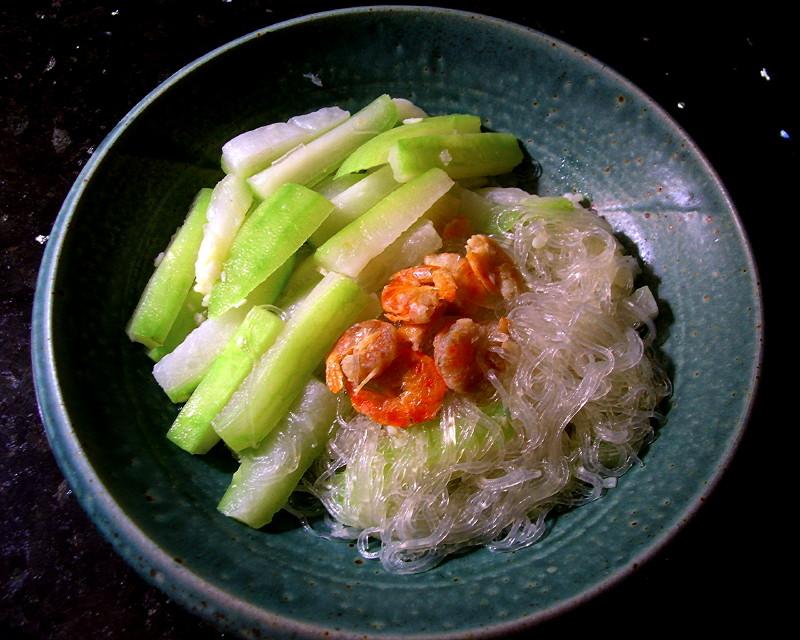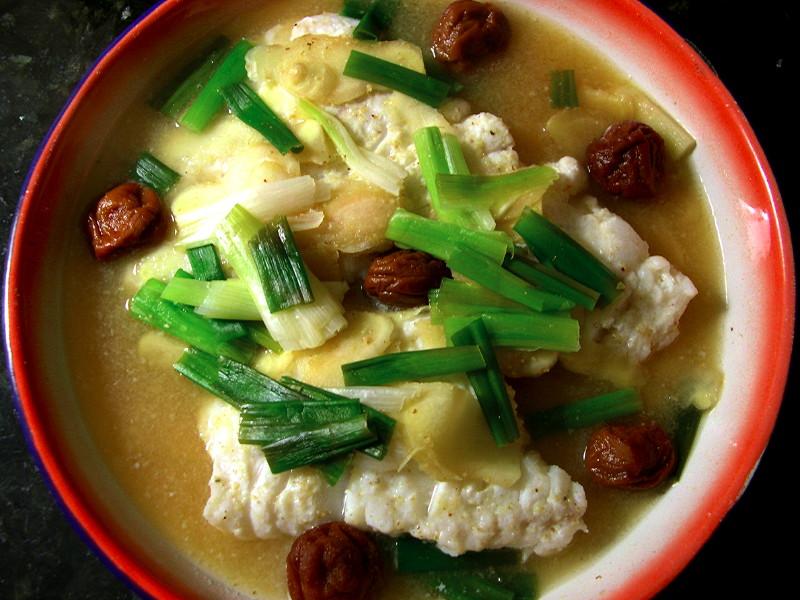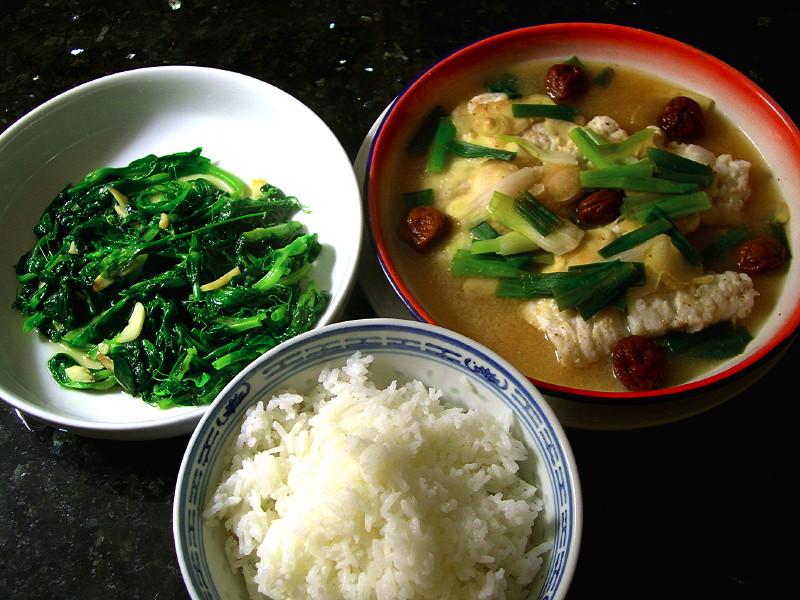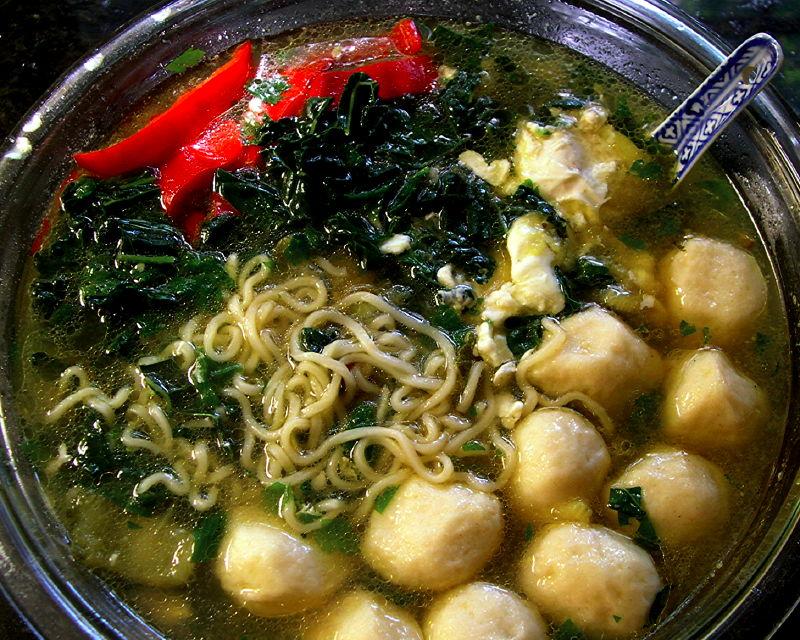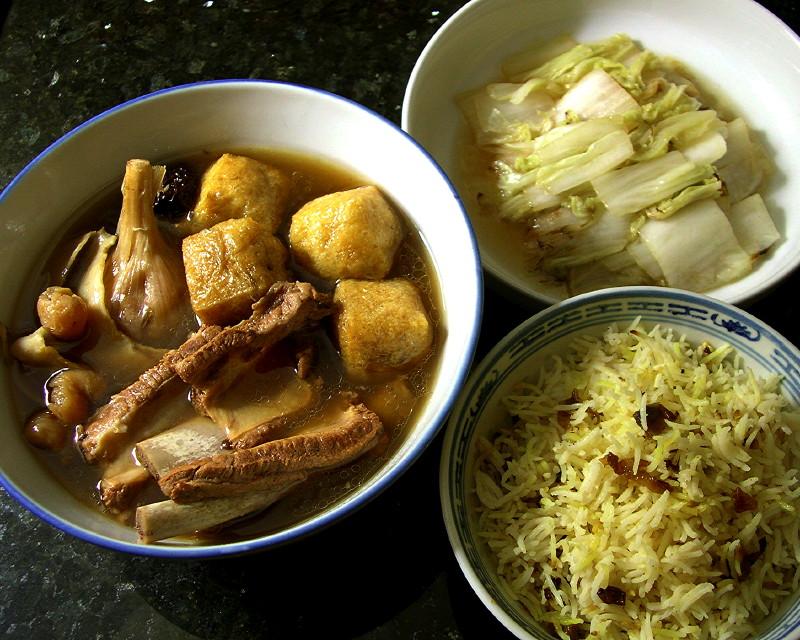-
Posts
3,810 -
Joined
-
Last visited
Content Type
Profiles
Forums
Store
Help Articles
Everything posted by huiray
-
Does Porthos have the power to assign the procuress of the carrots and potatoes to kitchen duty washing them? (He is the head of the kitchen but he has not said that he also is the head of staffing) How are the supplies paid for? Does the procuress use Ren Faire funds or (somehow I get this feeling) donate those carrots and potatoes to the faire? If the latter and she is as stubborn as Porthos says she is (and as he says he has no control over the shopping) then his talk with the faire mistress, as he mentions, may be the only way out... Perhaps the faire mistress can reassign the procuress (or request her) to do something else. ---------------------- But with regards to the original question of the topic - yes, sometimes I get tired of certain kinds of "organic produce" too. Bugs, for one. the COST, for another. ($4 for a bunch of maybe 5-6 medium-sized carrots, to use the example of one of the produce items being hashed over in this thread...eh, I'm supporting local farmers, I tell myself...unless they are red/purple/heritage ones, not available in supermarkets...) I enjoy going to Farmers' Markets and get nice stuff but I am another who doesn't particularly care if it is organic or not, in the end. Certainly my local Chinese or "Asian" groceries - let alone the usual supermarkets - can furnish much cheaper produce and I buy their stuff - which is almost certainly not "organic" - without much agonizing over it at all.
-
Oh, I'm sure it wasn't a cymbidium. (Cattails, you say?) I'm saying that it looks like a cymbidium from this side of the screen. ;-)
-
• Fedelini w/ meat sauce.¶ • Sautéed chopped Savoy cabbage. ¶ EV olive oil, diced yellow onion, chopped smashed garlic, medium heat; finely sliced de-stringed Western celery, grated red carrots, finely sliced Hatch chile; minced pork, stir/gentle sauté; chopped ripe Japanese Trifele tomatoes, break up, medium heat; sea salt, some light soy sauce (sang chau), "aged" rice vinegar, jozo-mirin, simmer; sliced standard mushrooms, simmer; thyme & oregano, seasoning adjusted, simmer till done. p.s. The pasta was barely drained. I don't mind it wet and runny. I rather like it, actually. Fork & spoon. ;-) ETA: Oh, some fresh bay leaves also went into the meat sauce.
-
ABC News clip.
-
Well, from where I am sitting it looks like a cymbidium plant in that bag. I also wouldn't have thought that cymbidiums grew wild in New Mexico. ------------------- I am another who thinks that copious numbers of glossy photographs in a cookbook is...excessive...and renders it a "coffee table book". Concentrate on the recipes.
-
"Fresh" pork tonkotsu ramen [sun Noodles]; with Chinese char-siu (no Japanese chasu at hand), chopped Pull Mustard (雪裡紅), sliced "fish tofu" (a form of surimi, fried cubes) [CF Trading], chopped scallions, a couple of hard-boiled eggs (halved). Note the milky broth (from the broth concentrate included in the package).
-
-
I think this is true in general of most of the cuisines in South and South-East Asia, at least, those that have "curries" as a feature and for those that I have some experience with (like growing up with them) I don't know about the situation with African or West Asian or New World cuisines. Many dishes *can* be very "hot" but to believe that (as a general statement) the hotter a dish is the more authentic it is is simply not true. Malay, Indonesian, Nyonya, Thai, Indian regional cooking (within my experience) - the tastes are supposed to "balance out", as a general principle, not overwhelm with hotness. "Heat levels" also vary widely depending on household to individual to sub-regional variations. One exception that comes to mind would be Chettinad cuisine, where extreme hotness is a more common "feature". I've mentioned it elsewhere here, but this phenomenon of "chileheads" especially in North America desiring hotter and hotter dishes regardless of whether a dish is even supposed to be hot in the first place¶ is perplexing to me. The "balancing" of flavors is also what trips up a lot of Thai food in the USA. Yes, it can be "hotter" in the traditional rendition than what many folks here are able to take - but when the restauranteurs dial back the heat levels they sometimes neglect to dial back the sweet aspect (or sour or whatever) so the resulting dish comes out overly sweet. (Besides, there is also the perception that USAmericans like sweet food) (and one also notes that the Thais themselves like sugar...) Another thing is the proportion of carbohydrate to curry that is typically served. In SE Asia one eats a curry (hot as it may be) with much more rice than might be done with (yes, Caucasian) folks in the USA where the ratio of rice to curry is often far smaller. Sometimes one reads about folks eating *just* the curry without any rice or noodles - certainly in those cases the heat level of the dish becomes much more pronounced because there is no "leavening" of the heat with the rice or noodle. Or the omission of yoghurt or other forms of "cooling accompaniments" to moderate the heat levels of the dish. ¶"Steamed fish? Tasteless!! I need chiles! More chiles! MORE!!" :-)
-
Very interesting chefmd, thanks for posting. The caviar is indeed expensive. Yes, I understand this is in a "gourmet store" and there are lots of rich folks around nowadays - but I am just curious --- how frequently would the "general populace" (and the percentage of it) in Moscow buy these nowadays? ------------------ Shelby, have you had xiao long bao or tang bao before? :-)
-
When I make sauce or soup, I let them sit/float in the hot water (I actually bring it back to a simmer) until the skin "cracks". (I also add some salt into the water) Then they go into cold water, yes - but now the skin just slides off... and the seeds & "jelly" from the warm insides are easy to push out (from the halved tomatoes) and strain through a fine mesh sieve. The flesh is also easier to break up in the pot without having to wait till they cook a while. (I do everything after the cold water dunk over and into a couple of big bowls to capture all subsequent juices). That's what I do, anyway. (I rarely eat uncooked tomatoes. My "green" salads at home usually do not include tomatoes (restaurant salads would tend to have them, yes), I don't make BLTs and other tomato-containing sandwiches at home and rarely eat them outside. The main thing I do with raw tomatoes are Caprese salads and I haven't even made one lately. :-) )
-
Used as both a flavoring agent and as a vegetable - steamed cod fillets w/ sliced young ginger & other stuff: details here. It is not obvious from the picture but there is also a layer of ginger slices underneath the fillets.
-
Very late dinner. • Icelandic cod fillets steamed w/ sliced young ginger, scallions, pickled plums (酸甜梅) [Dragon brand], hon-mirin [Takara], fresh lime juice, rice bran oil, bit of sea salt, dash of sang chau. • Pea shoot tips stir-fried w/ garlic. • White rice (Thai hom mali).
-
That gumbo looks interesting, Shelby. Why did you not put the shrimps/prawns in after all?
-
I don't think so. The one I referred to is from Taiwan, not Anhui on mainland China. The one I have is produced by Da Guan and labeled simply as "clean/clear fragrant high mountain green tea" (清香高山綠茶).
-
Grocery shopping 2014-0919/0920 The Fresh Market: Hatch chiles, angel hair pasta, Belgian dark chocolate [Cavalier]. Goose the Market: Fresh Icelandic cod, pork spare ribs, Jamon Serrano, Saxon Greenfields cheese. BRFM: Savoy cabbage, Chioggia beets, green shishito peppers, big fat RED shishito peppers, mizuna greens, small broccoli florets, rainbow chard. CFM: Wong nga pak (Napa), young daikon, Spanish Roja garlic, red cayenne chillies. Asia Mart: Cooked duck egg yolks (packaged), fresh tonkatsu ramen (w/ sauce packs) [sun Noodle], Thai hom mali rice (Golden Elephant & Four Horses (??) brands), Pull Mustard (雪裡紅), fuzzy squash, pea tips, green onions, young ginger, bitter melon #1 (Taiwanese “white” type), dried bok choy (“choy kon”; 白菜幹), chicken drumsticks, soft tofu, firm tofu, fried bean curd [Water Lilies brand].
-
Stir-fry w/ beef - slice the ginger thinly, use it almost like a vegetable. (see here as an example; scroll down) Almost any other sort of "quick-cook" dishes (stir-fries especially) where one might use ginger. (With slow-cooked or braised dishes or long-simmered soups old ginger would be preferred, for me anyway)
-
• Ibumie Penang Lad Mee Perisa Lada Pedas (Hot Pepper Flavour); augmented w/ chopped smashed garlic (Siberian Red), de-ribbed chopped Tuscan kale, sliced de-seeded sweet Italian red pepper, fish balls [Venus], and a couple of farm eggs poached in situ.
-
Bak Kut Teh. • Water, pork baby back ribs (cut into single ribs), two whole heads of garlic (Siberian Red) parchments & etc intact, dried Angelica sinensis root slices, dried Polygonatum odoratum root slices, dried Codonopsis pilosula roots, a lightly crushed black cardamom pod, dried longan meat, dried “black jujubes” (黑棗) (which is actually a kind of prune), dried tangerine peel, bring to a simmer. Skim. Simmer. Dried star anise pods, cassia pieces, whole cloves (all generous amounts), crushed whole white peppercorns, light soy sauce (“sang chau”) [Kimlan] (i.e. I skipped the oyster sauce and dark soy sauce for this batch – which keeps the broth “lighter” in both taste and color). Simmer. Soy puffs [Nature’s Soy]. Simmer till done. The combinations of the herbs for my Canto-Hoklo BKT varies in proportions or in additional stuff or swapping out of this-and-that for other this-and-that each time I make it. :-) • Wong nga pak (Napa cabbage) “stir-fried” w/ just sea salt, *very* hot oil. • Basmati rice, cooked w/ sliced shallots deep-fried in turmeric-infused oil.
-
Dejah, heh. Well, at times I'm sure *certain* folks would keep their distance from me after a meal redolent with the crushed bulbs of an Allium species. I don't often have "yow char kwai" with me either. I don't usually eat them with jook/chook/congee myself; I do it with Bak Kut Teh on occasion. Actually I was going to add either "pei tan" or "harm tan" into this last batch of congee but I forgot about it...
-
BTW the grocery stores (the bigger ones) often also have a selection of teas. Check them out. I currently drink a high mountain green tea from Taiwan which I get from my local Chinese grocery, as well as other stuff like Ti Guan Yin or Westlake Dragon Well teas. I also assume you know of these websites? http://www.teavivre.com/ http://www.sevencups.com/
-
http://www.worldoftea.org/chicagos-chinatown-not-a-tea-mecca/ Read the comments. Boba tea (non-traditional): http://www.chicagoreader.com/chicago/saints-alp-teahouse/Location?oid=1025585 Directly under Phoenix. Consider having "kook-pou" when you are in Phoenix having your dim-sum: a mixture of po-lei (pu-erh) (ask for "leng po-lei" ("beautiful" po-lei)) and dried chrysanthemum. The last time I had it there it was a decent pot of tea, not outstanding but a nice change from the standard stuff dim-sum places give people in these parts. You're supposed to be concentrating on the dim-sum, anyway. :-)
-

Stuff I got from the producer because the local place was not regular
huiray replied to a topic in Kitchen Consumer
I like it very much. A wonderful addition to the palette of American cheeses available nowadays and possibly my favorite cheese as of now. ETA: Which was why I went to the producer directly. I got frustrated with asking for and seeking the cheese from this local place. There is a "companion" cheese, also "Tarentaise", from "Farms for City Kids" which entered into an agreement with Thistle Hill Farm to learn from them and produce their version of the cheese. The local place in Indy also has/had this one on occasion. I decided to go to the original US producer of the cheese - which is, of course, patterned after the French original. ETA2: I will file away the other recommendation for reference as occasion arises. ;-) -

Stuff I got from the producer because the local place was not regular
huiray replied to a topic in Kitchen Consumer
It's whatever you want it to be, Weinoo. ;-) And yes, I wrote it as you see it and left it for folks whose minds may stray, even if I explained what I meant in the body of the post itself. :-) -
The comments on the SF Eater article clearly shows the two camps involved - in the old story of organic/no-MSG vs the doesn't-matter camps.


